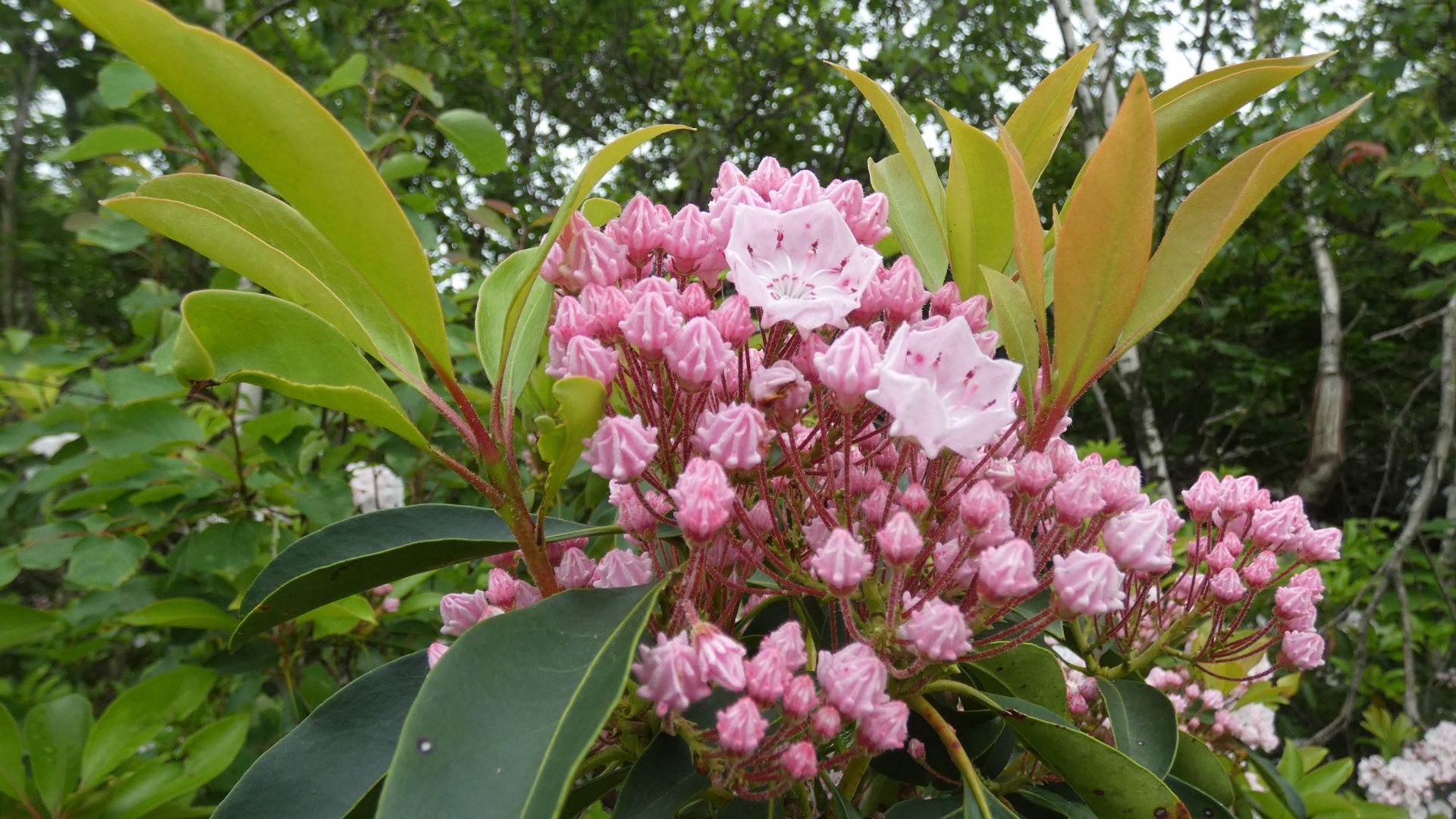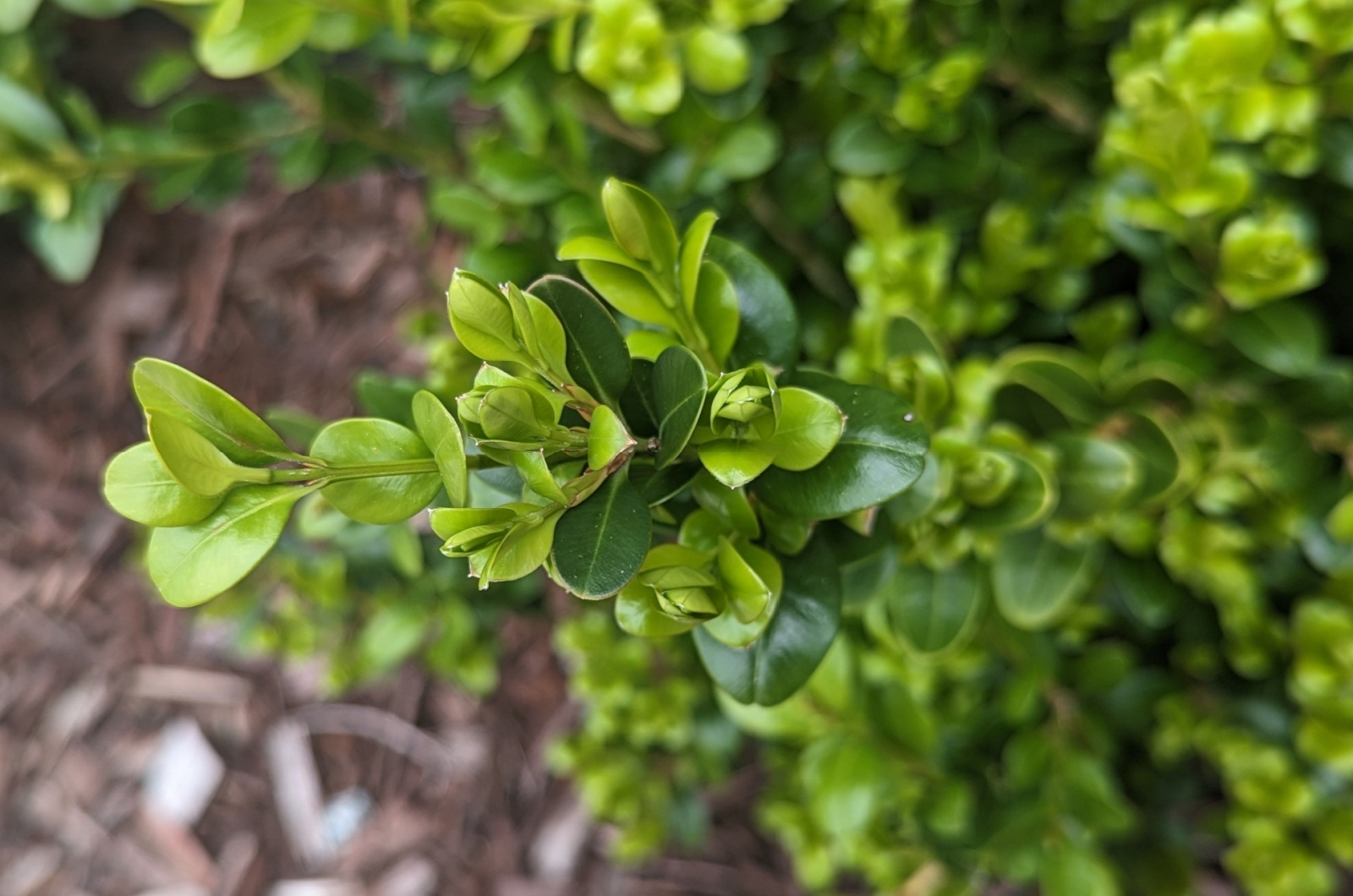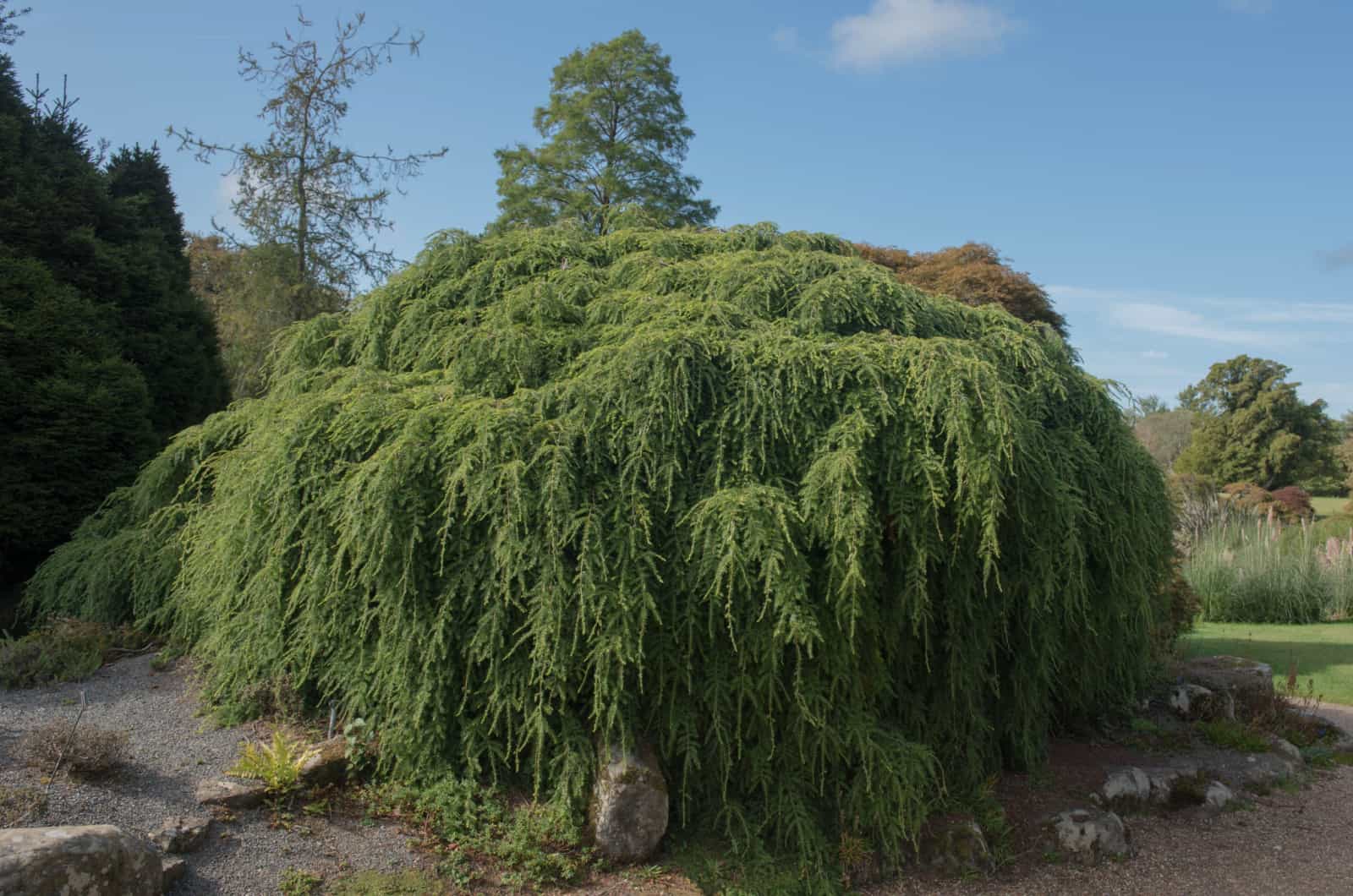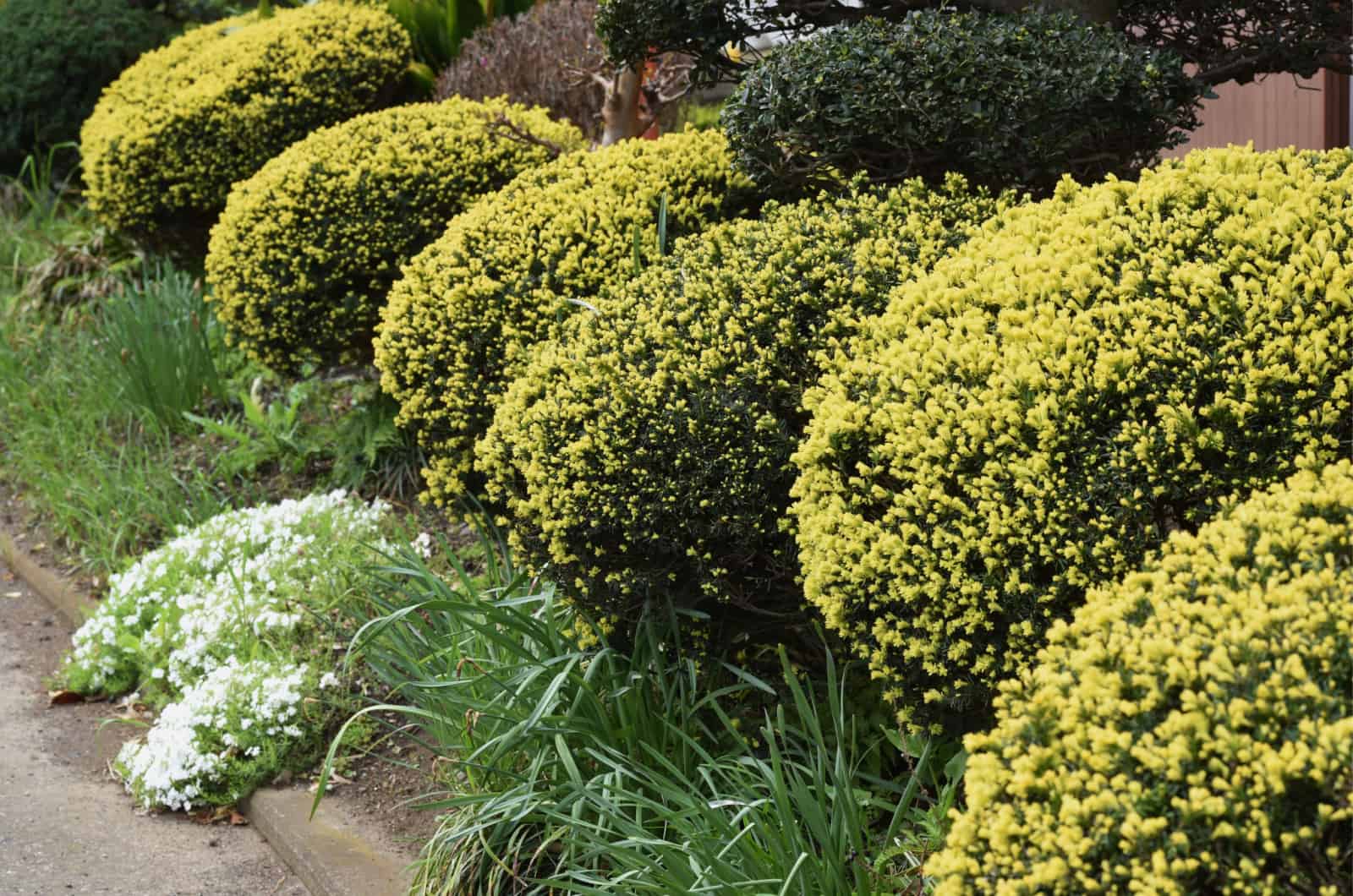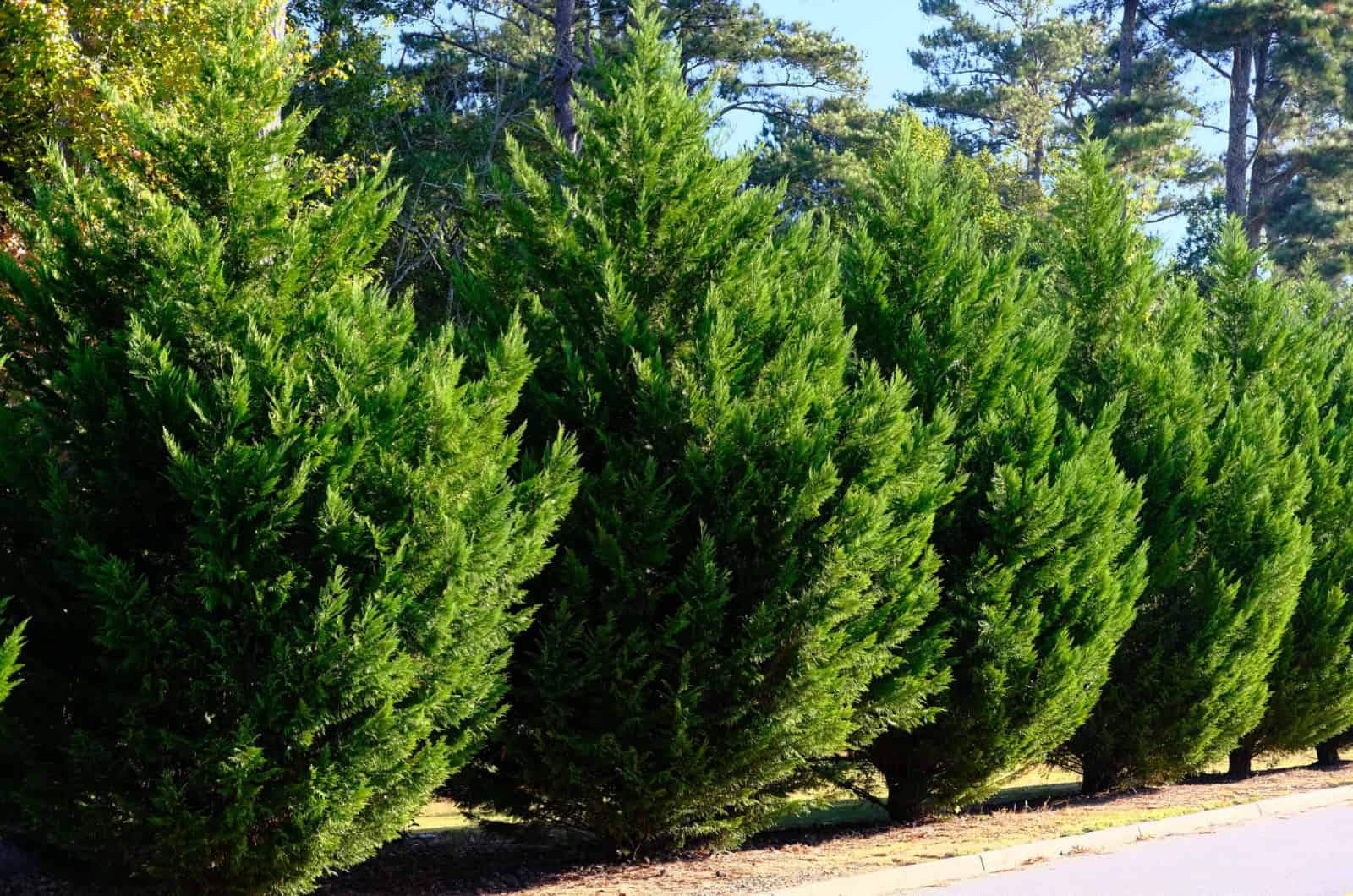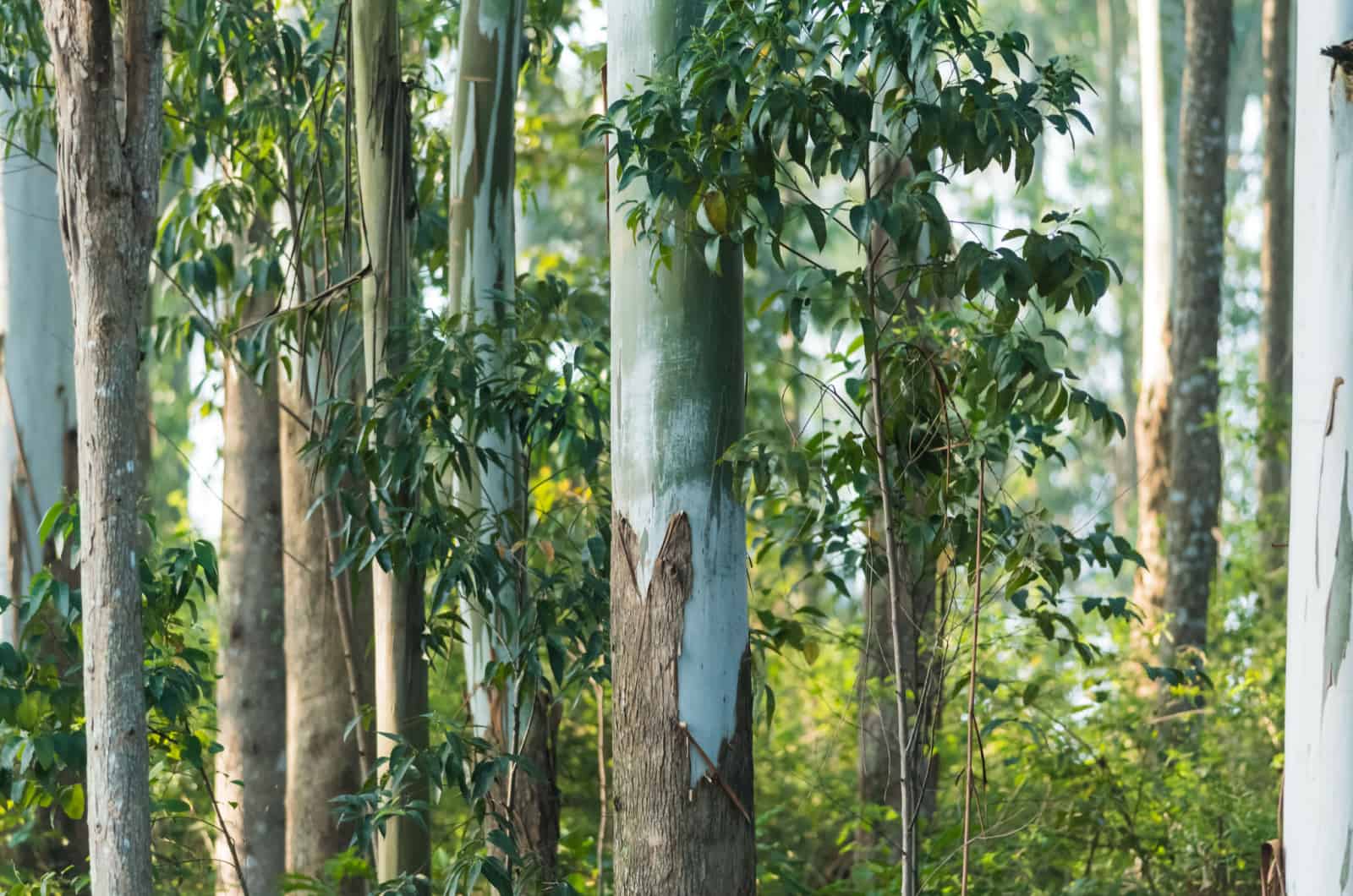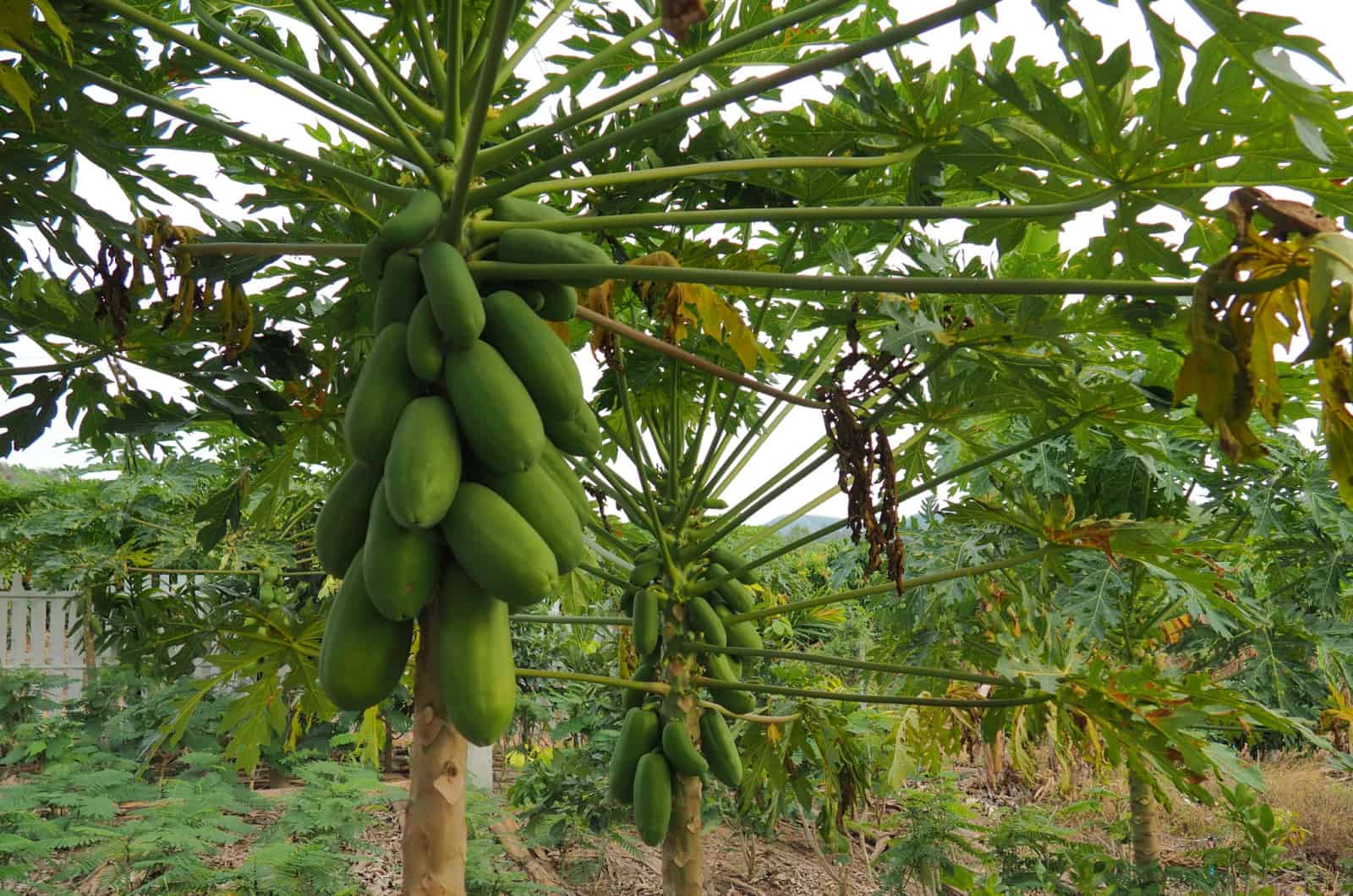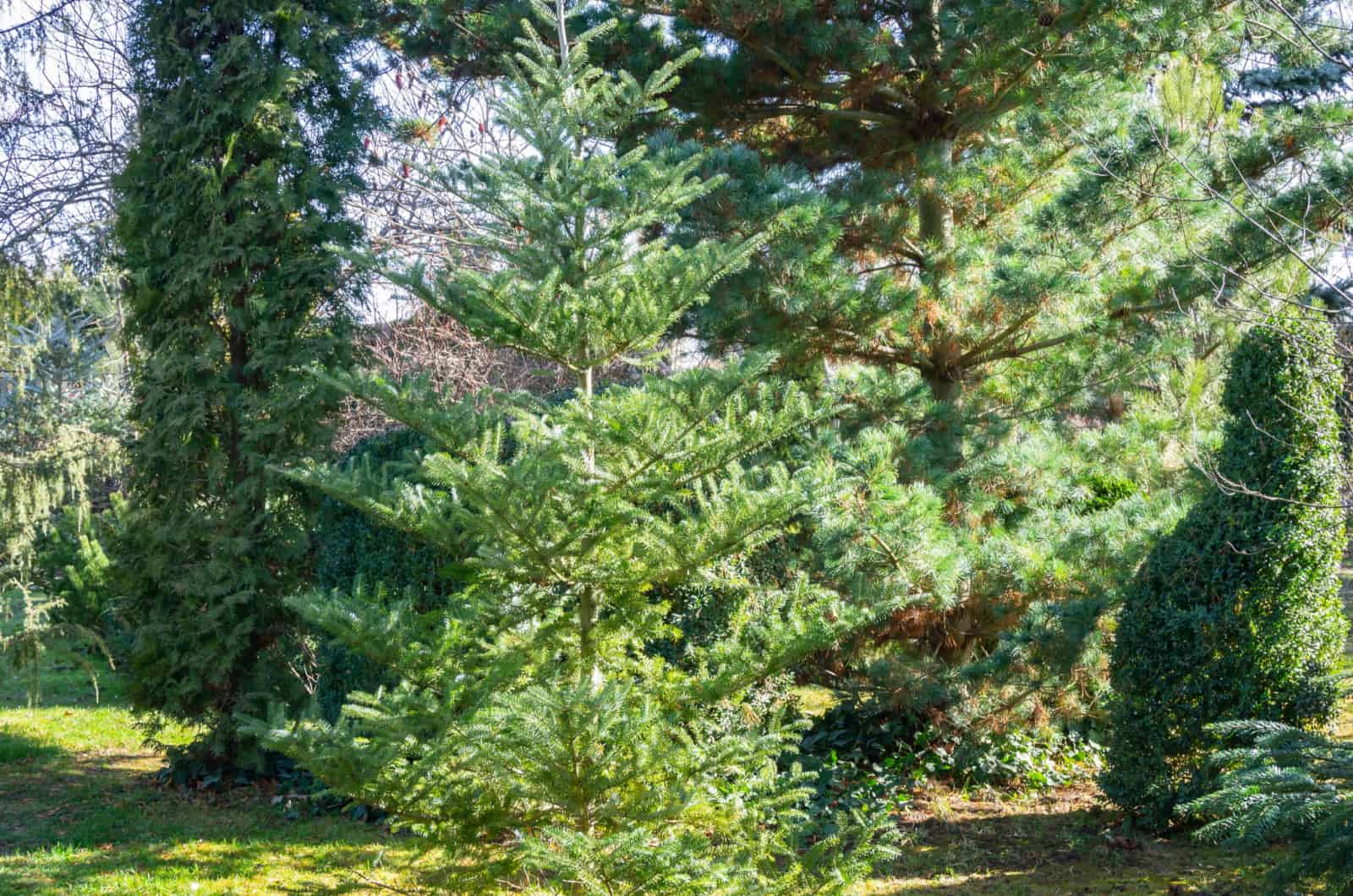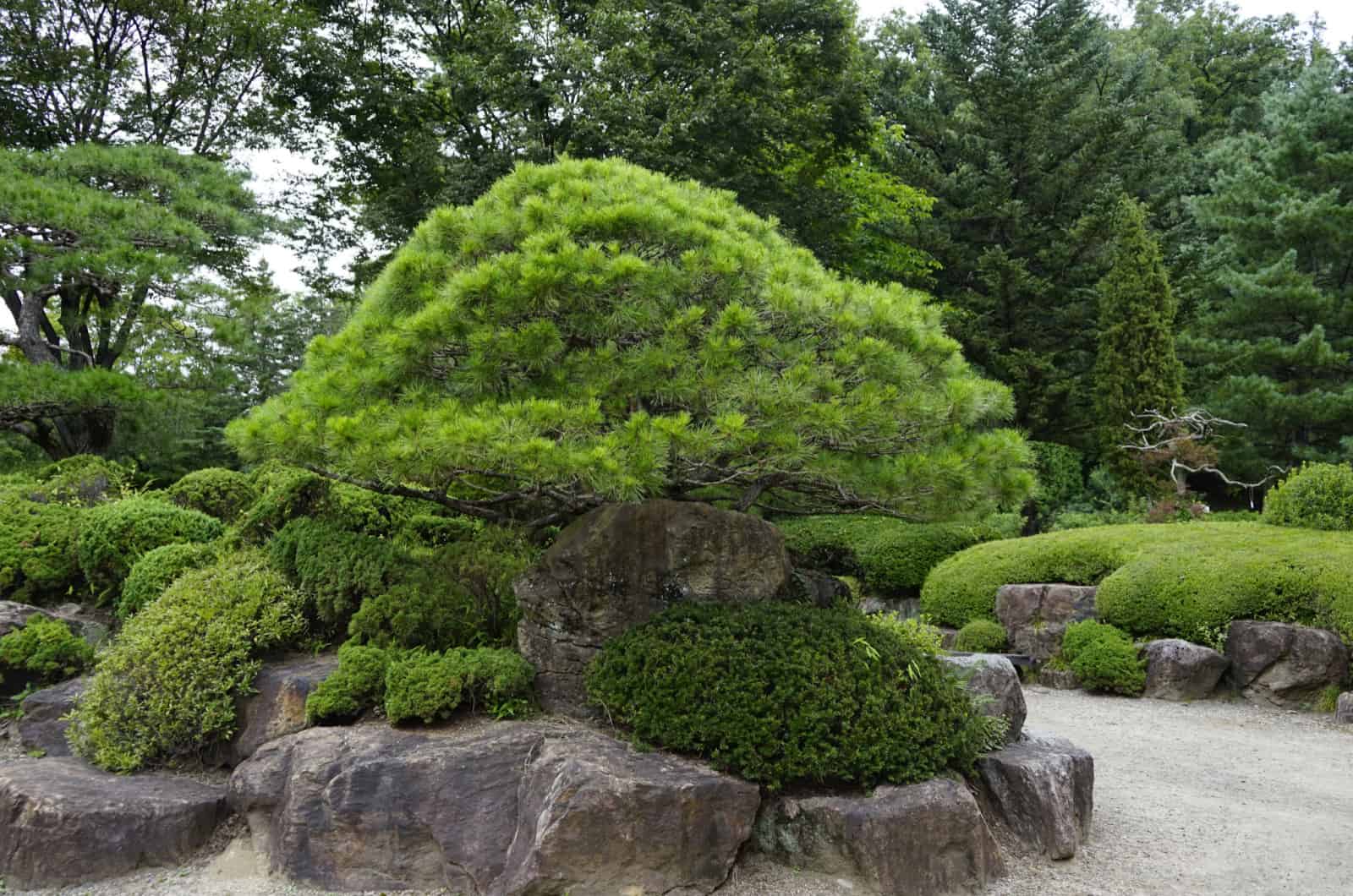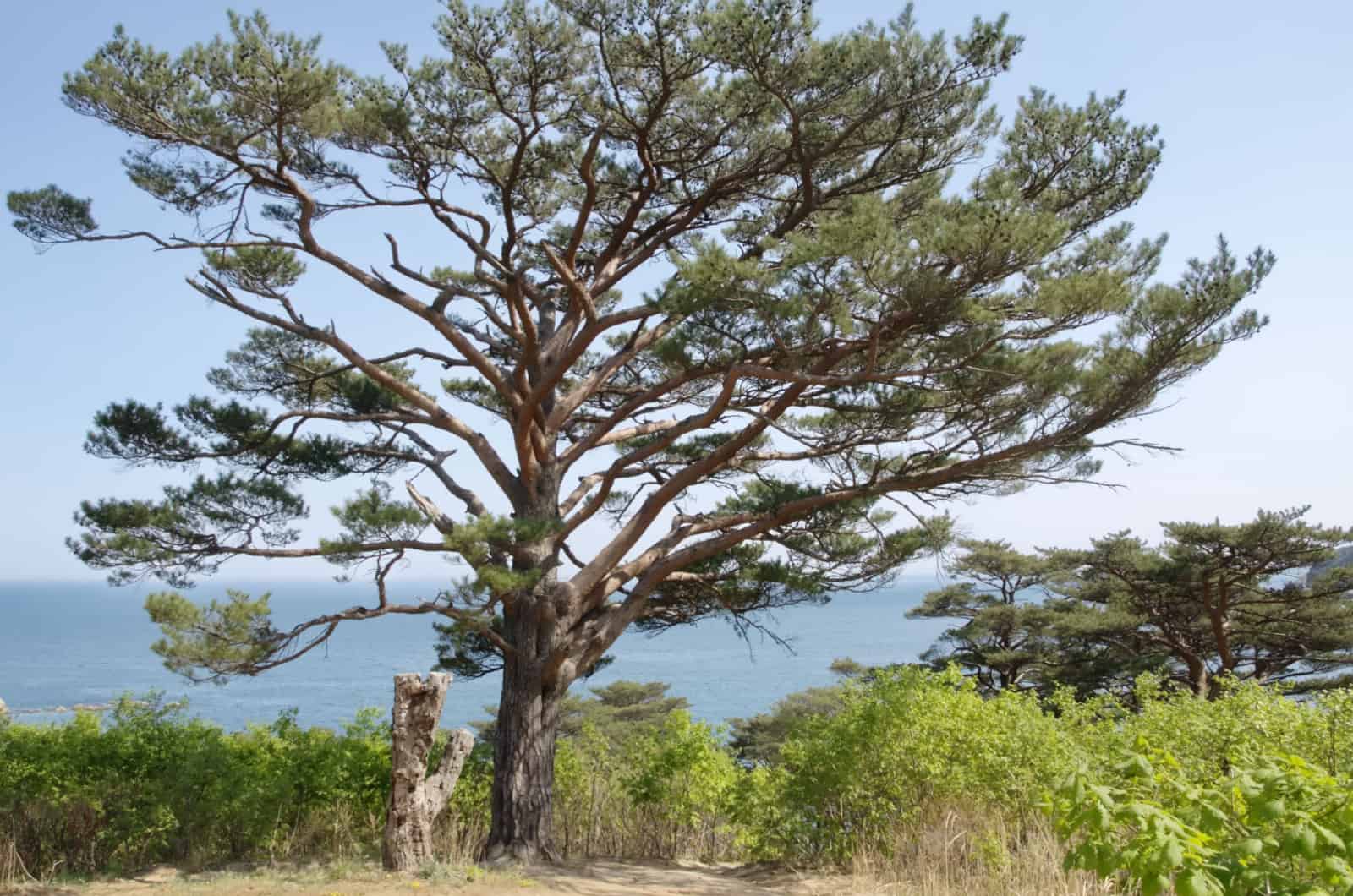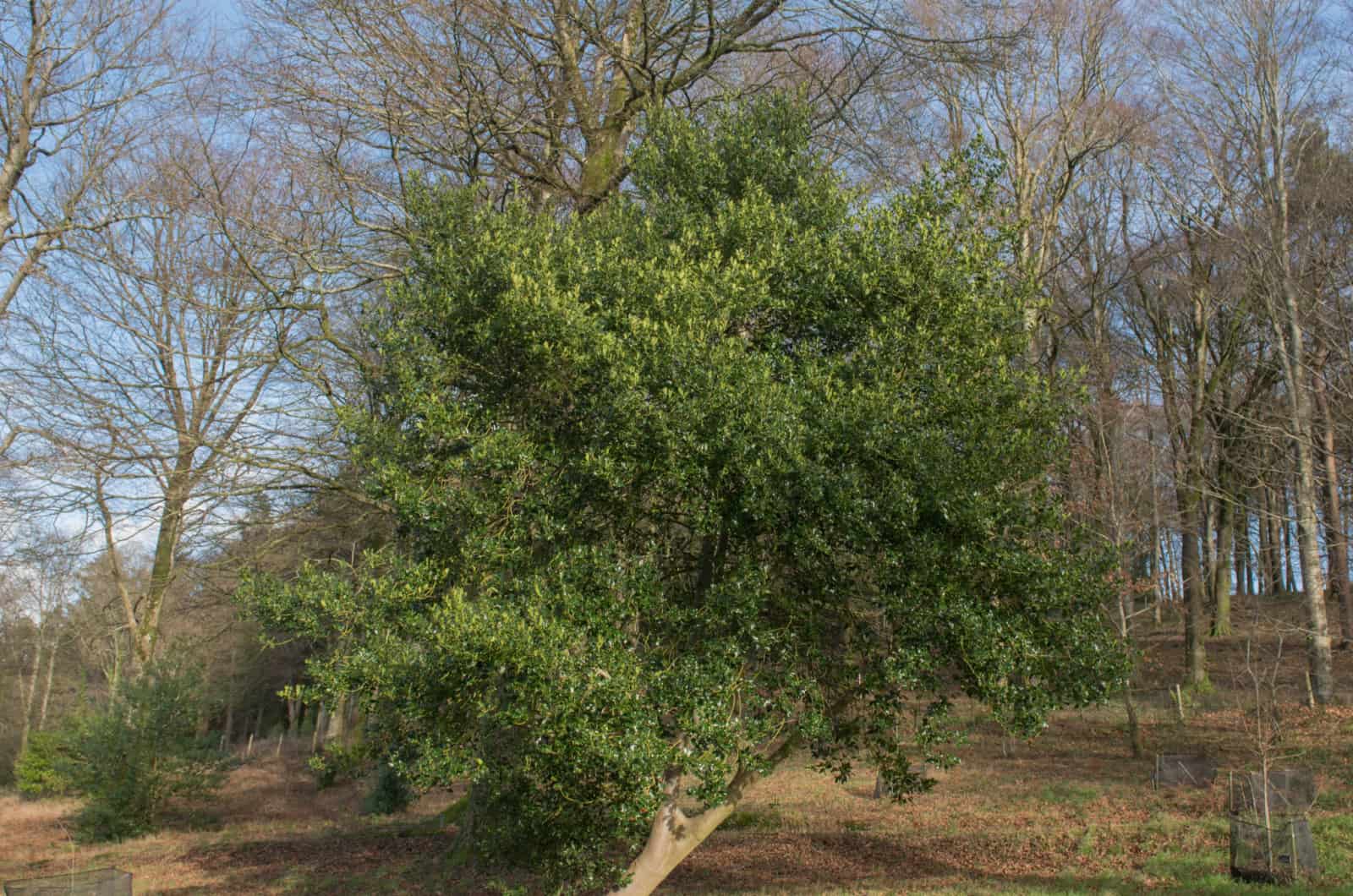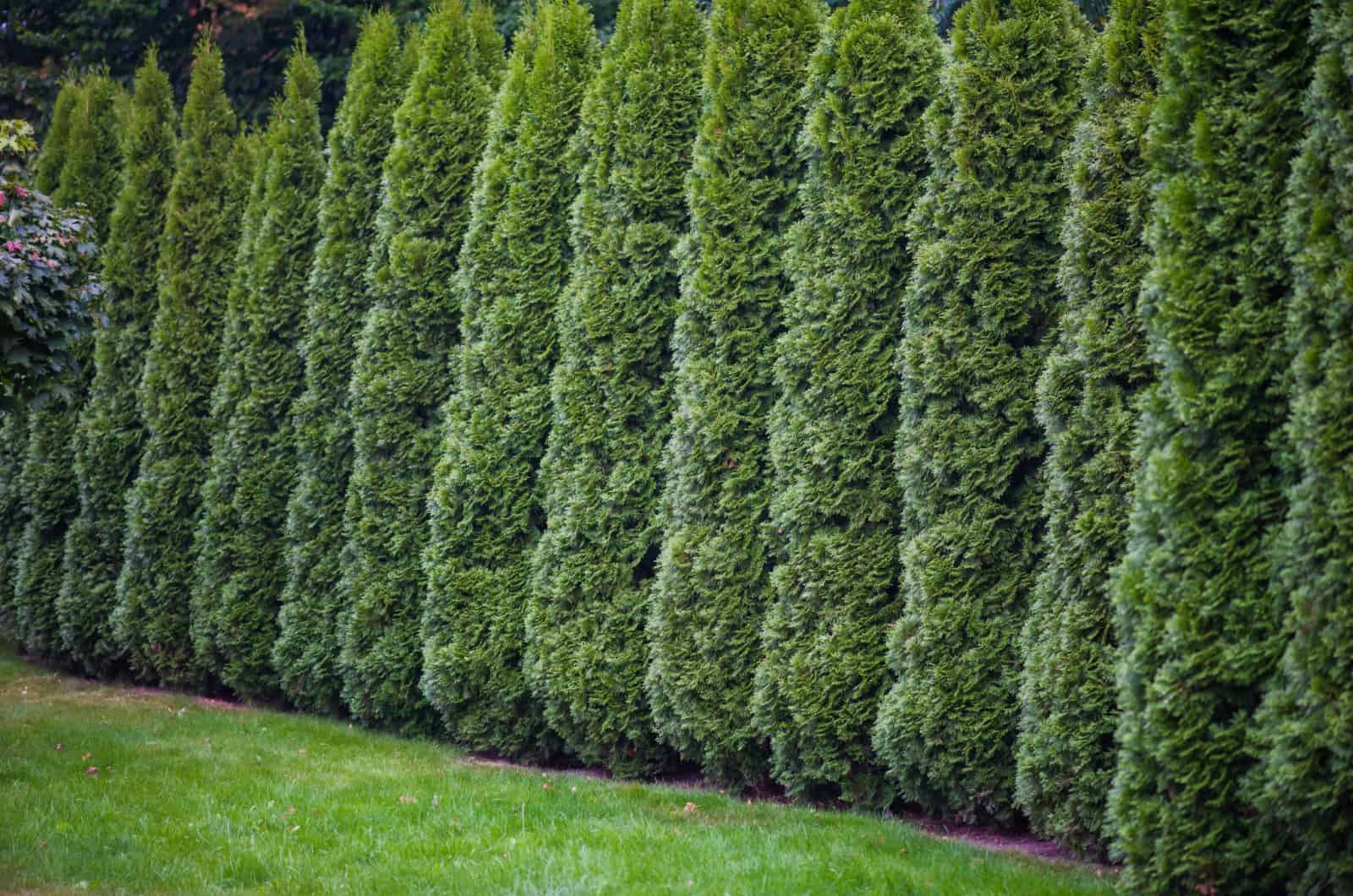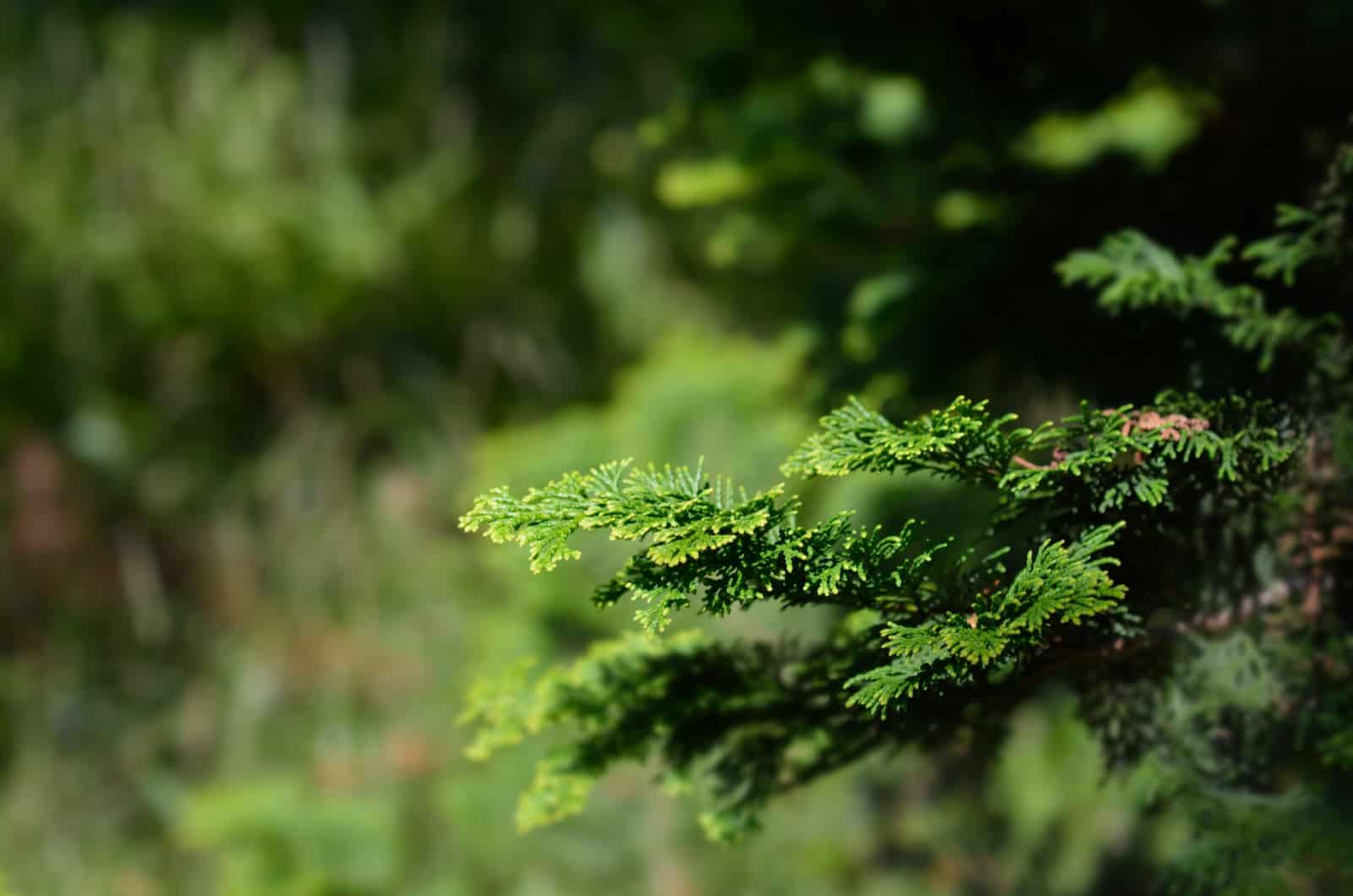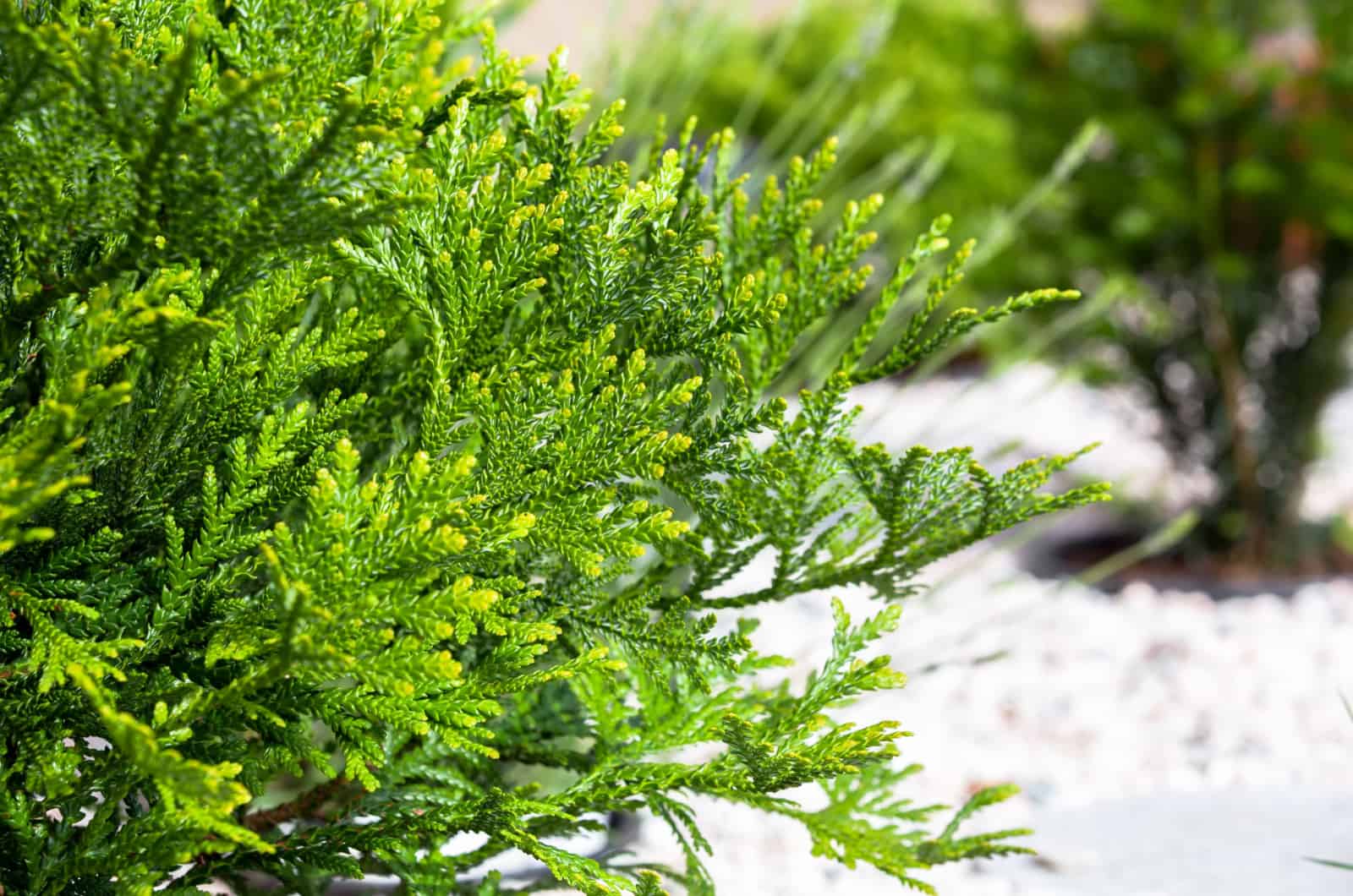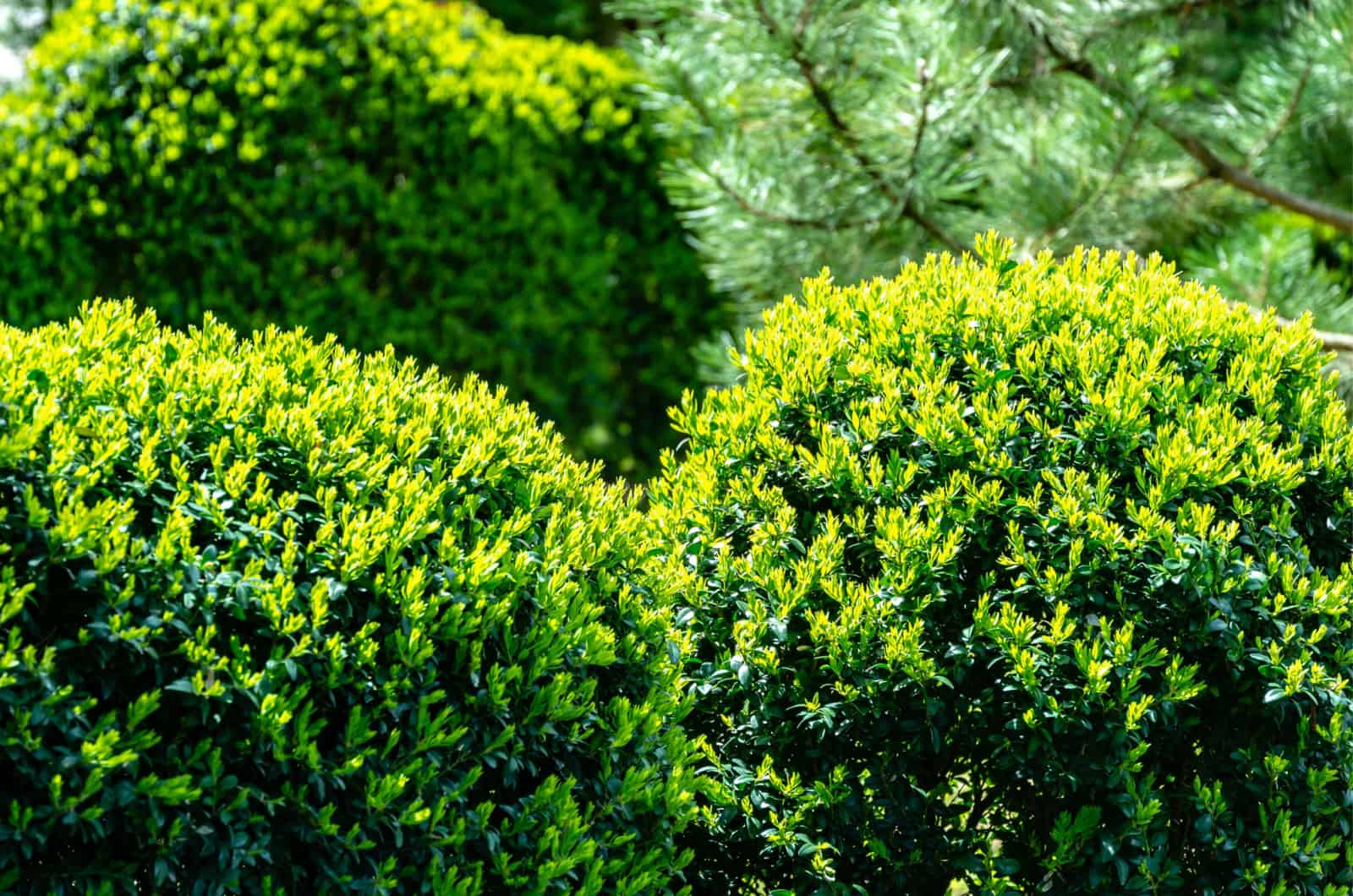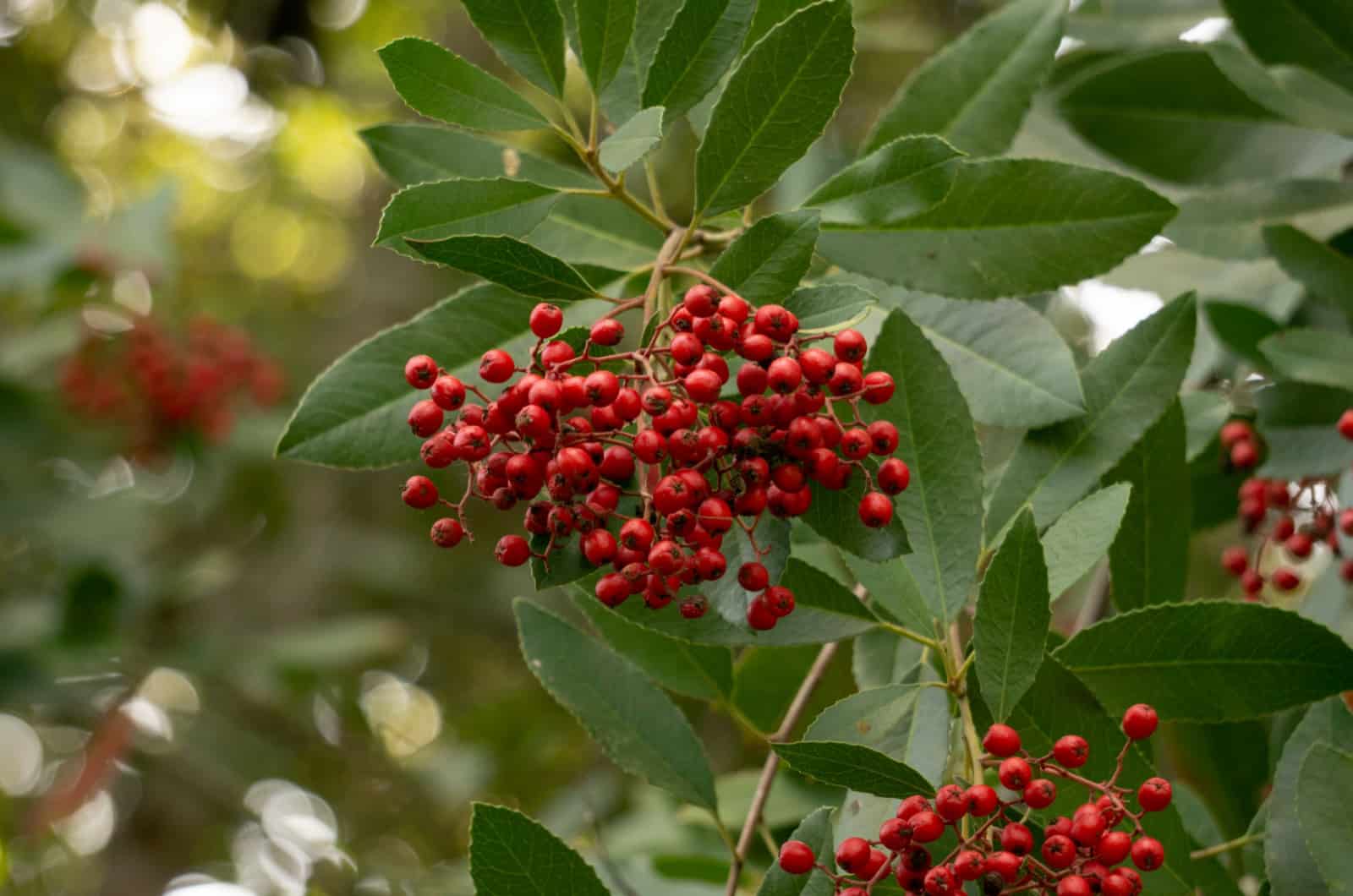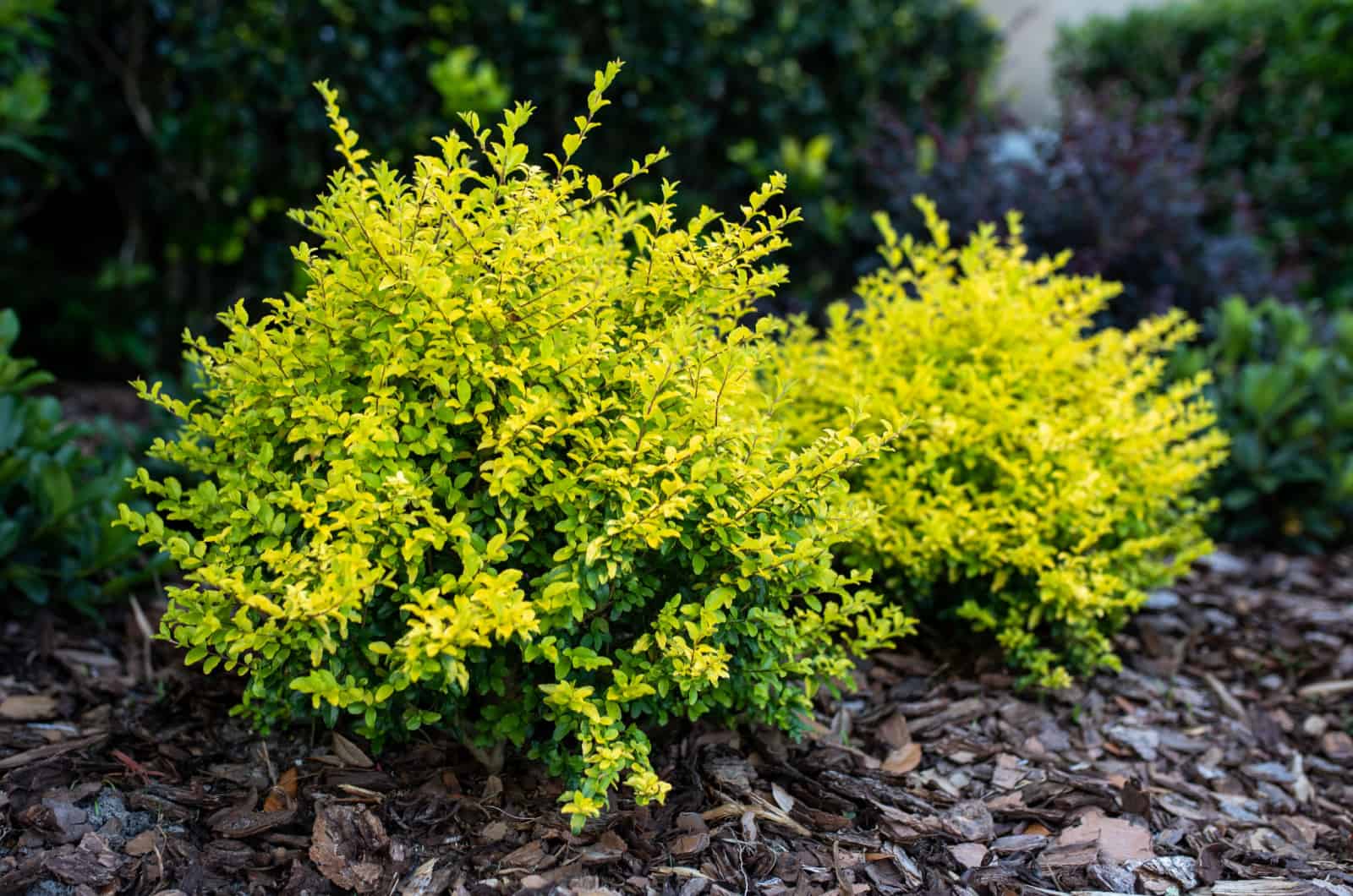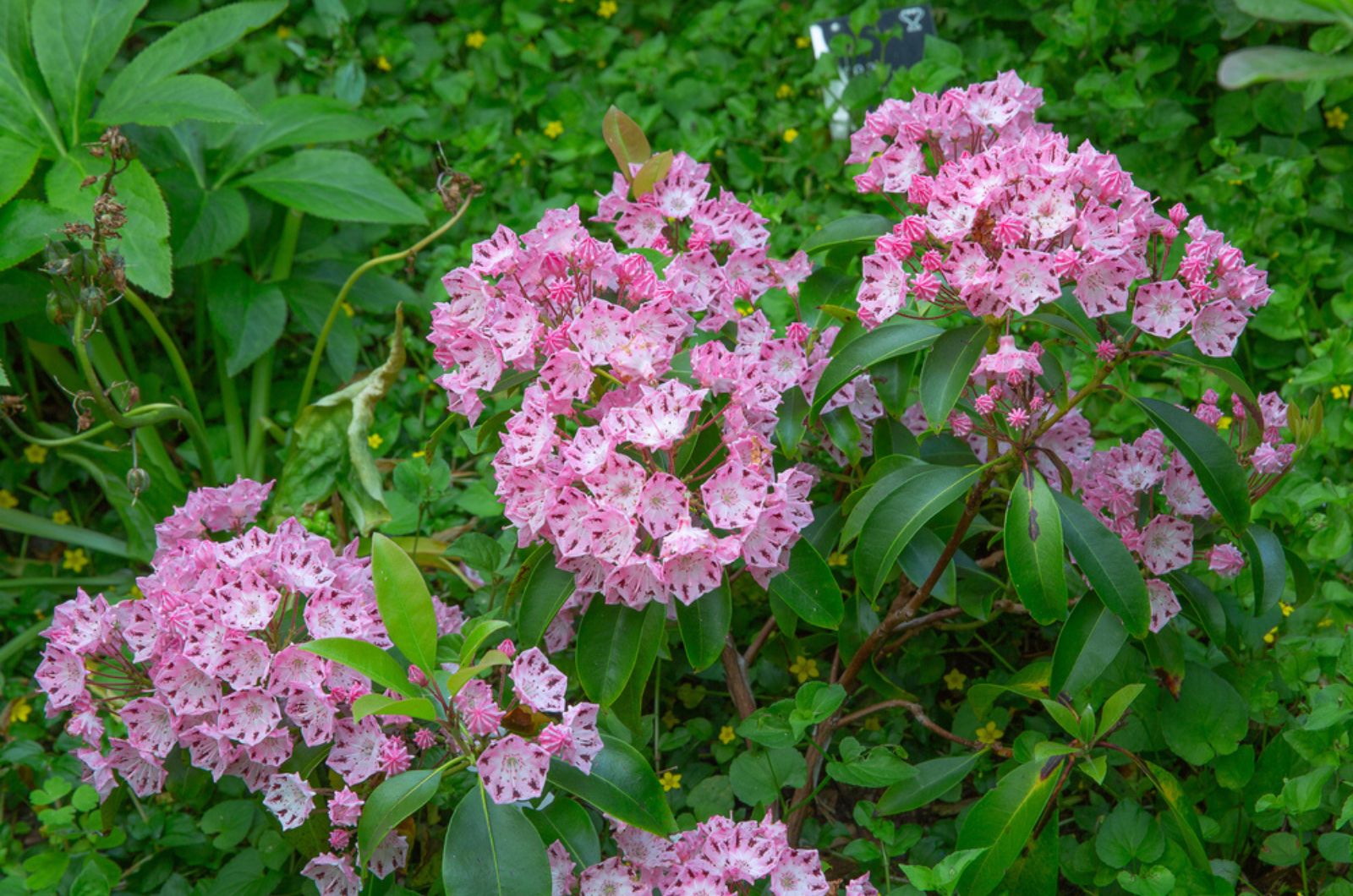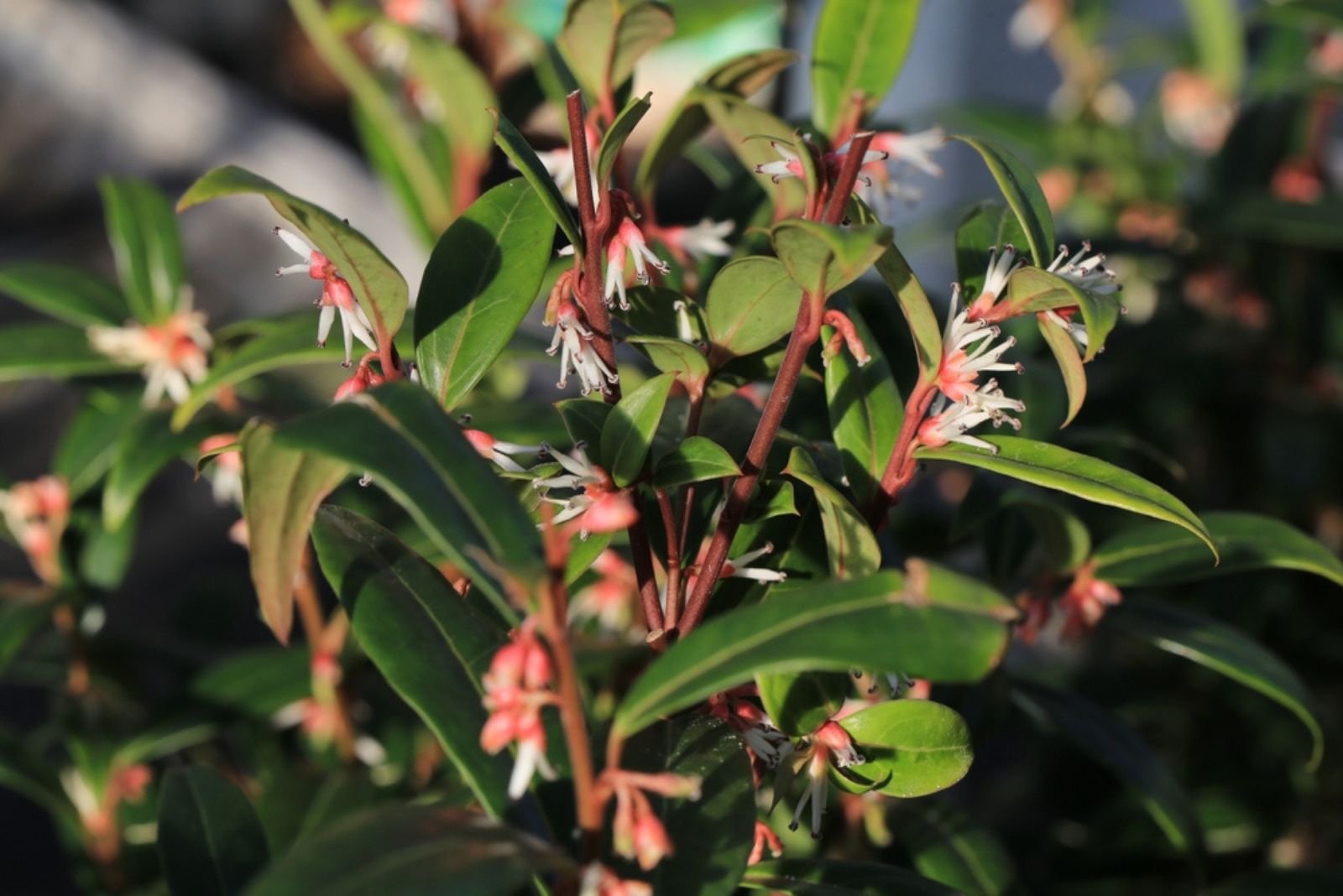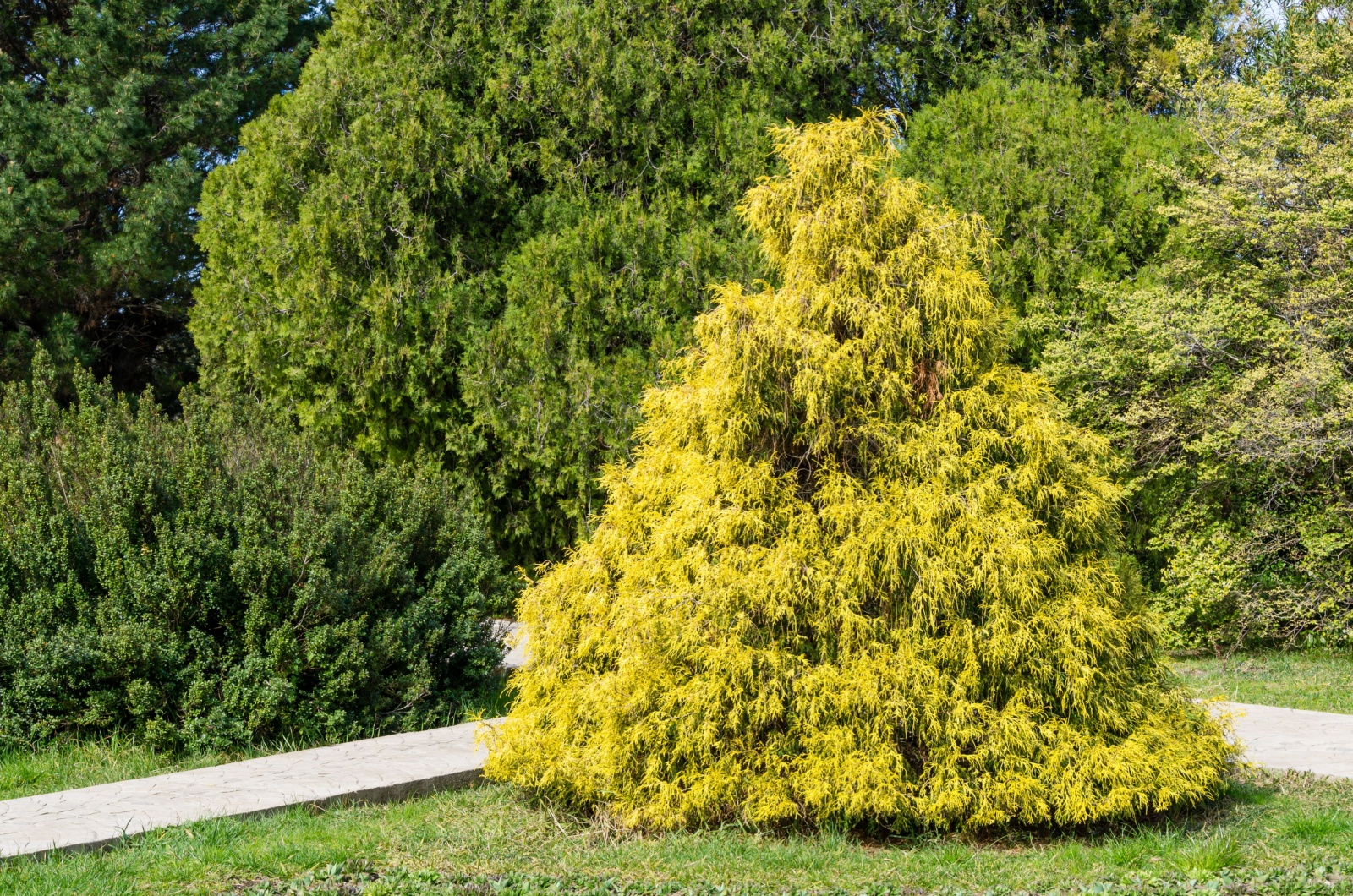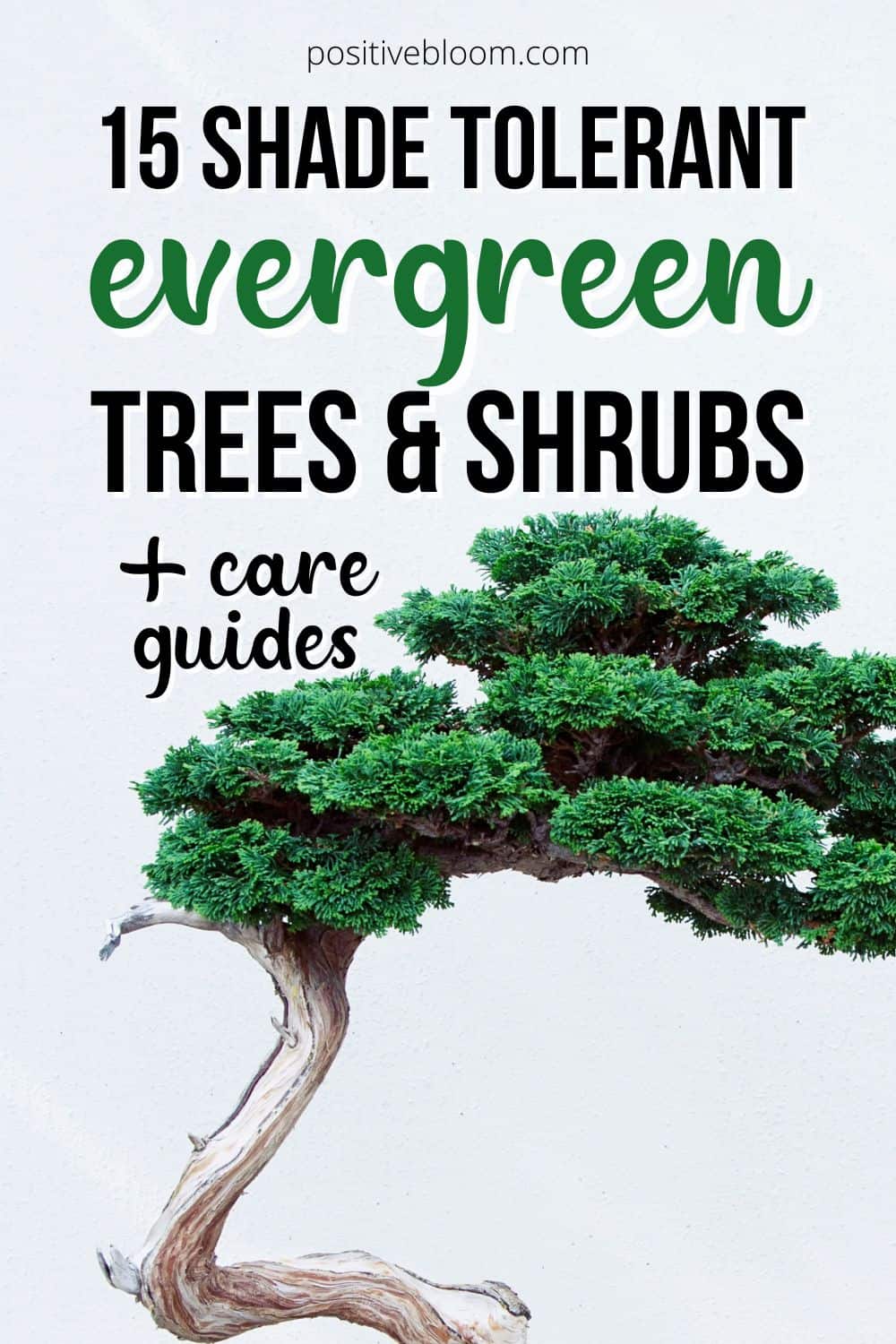Conifers and broadleaf evergreen trees and shrubs are popular landscape additions that stay attractive all year round.
And they require almost no leaf raking!
There is one more thing that makes these perennial trees even more attractive; their tolerance and love of shady locations.
Yes, there are trees that don’t require full sun conditions in order to adorn your front yard with their dark green needles and foliage!
We’ll examine some popular choices you can use to make a hedge around your suburban home or create a small forest around your country house.
Let’s begin!
15 Shade Tolerant Evergreen Trees And Shrubs
We picked fifteen different shade tolerant evergreen shrubs and trees you can grow in low-light conditions, such as yew, pine trees, and firs, to go through today.
Of course, there is a wide range of varieties, and you can pair them with your deciduous trees, such as dogwood, magnolias, oaks, and maples, to create a colorful garden.
Let’s talk about evergreen trees because they look their best all year long. We will look at their basic requirements so you can check whether your garden has everything they need aside from shade.
1. Eastern Hemlock
Eastern or Canadian hemlock is known in the scientific world as Tsuga canadensis. It is a long-living tree that can survive for more than 500 years.
It has a slow-to-moderate growth rate, increasing in height by about 1-2 feet a year. As it can live a long life, this perennial can reach a hundred feet easily!
Like all other conifers, it bears brown cones 1/2-1 inch in size. Therefore, if you opt for this tree, you’ll get an endless supply of craft material for wreaths, flower projects, and other decorations.
We know that the color of this plant’s short needles might be a decisive element, and the upper surface of eastern hemlock needles are dark yellow-green, while the bottom parts clad themselves in whitish shades.
Here are the basic needs of this plant:
[table id=390 /]2. Japanese Yew
This slow-growing evergreen shrub is called Taxus cuspidata by botanists, and there are cultivars you can grow in pots, although their size would be limited.
It is usually around 6.5 feet tall, but in its native habitat, it can get to about 30 feet.
One of the things that make it so popular among growers around the world are its red berries. Although they are inedible, they still make an attractive decoration.
Its dark green needles have a fine texture and are perfect for landscape design, whether you want a hedge, topiary, or privacy screen.
And if you want to keep the needles green and berries red, be sure to meet this tree’s basic needs:
[table id=391 /]3. Leyland Cypress
This fast-growing conifer is an excellent way to create a privacy screen or a hedge around your home because it can get up to 130 feet tall. However, its usual size is between 50-70 feet, so you don’t have to worry about it overtaking your landscape design.
The Leyland cypress might not bear white flowers like a dogwood or dragon tree, but its tiny, silvery, or brown cones are equally attractive.
The reddish-cinnamon-colored bark of this tree complements the forest-green leaves nicely and brings out the best of your garden, even in shady spots.
Finally, this is a pretty low-maintenance plant, but if you want to make caring for it even easier, you can mulch it to prevent evaporation and keep the soil moist for longer periods.
Mulching is a good tip, but that’s not all that your plant needs:
[table id=392 /]4. Eucalyptus Trees
Eucalyptus is another fast-growing evergreen tree that is perfect for your shade garden. It is deer-resistant and can reach up to 200 feet.
There are different varieties, and you can always get a small tree that only grows 30 feet tall. There are also medium and large-sized eucalyptus trees for more privacy.
This tree even bears remarkable flowers from late February to early July, but the exact blooming period lasts about three months and depends on the climate.
Blossoms last about 1-2 weeks and don’t contain any petals. (To me, they look like small fluffy balls or caps of white, lime green, vivid orange, vibrant red, and lush pink.)
The leaves look like blue-green or silvery-green ovals that turn darker as they mature.
We must stress that eucalyptus trees cannot handle wet soils, so you must always be on the lookout for the symptoms of root rot and start treating your plant as soon as you notice them.
The easiest way to deal with this fungal disease is by avoiding it at all costs, and you can do so by meeting its basic requirements:
[table id=393 /]5. Pawpaw
Pawpaw is one of our favorite shade trees simply because it bears sweet-tasting tropical fruit from late summer into October.
It is a moderately-growing fruit tree, but only southern species are evergreen. However, you can enjoy northern pawpaws’ fall colors and their delicious fruits.
Lobed green leaves make it easier to rest in the shade of this tree, and its size is perfect for any garden. Pawpaw usually reaches between 15-30 feet, so you should space it between 8-15 feet when planting.
Of course, it is essential to know in which location you should plant it and how to care for it, so check out its basics below:
[table id=394 /]6. Korean Fir
The Korean fir is attractive on its own, but its violet-blue cones truly stand out among the green foliage, or rather, needles with silvery undersides.
This fast-growing tree usually gets between 30-50 feet tall, and will create a nice shady spot for you to get cozy during hot summer days.
It can tolerate heat better than most fir varieties, but it does prefer cooler temperatures, so be sure to grow it in suitable hardiness zones.
You can find this plant’s preferred climate and other requirements in the following table:
[table id=395 /]7. Japanese Umbrella Pine
Pines are a perfect privacy screen for a country house and provide enough shade for you to hang a hammock and enjoy a good book.
This variety has particularly dense branches and needles clad in dark green.
The Japanese umbrella pine is a slow grower, and it may take many years to reach its full size of 25-40 feet when cultivated.
In its natural habitat, this pine tree can reach a size of 100 feet, but it might take it 100 years to get there!
Finally, even though the roots of this pine aren’t really invasive, you shouldn’t plant it near your house or sewer lines. Many growers have had their share of clogged pipes, but you can use bleach to kill tree roots in your sewage without harming the actual tree if this does happen.
If you want to nurture your tree, meet the requirements from below:
[table id=396 /]8. Dragon Eye Pine
This pine tree has a unique, bright green color that turns gold down the needle. It is one of the most famous “golden” Japanese red pine cultivars due to its variegated needles.
Yes, pines can also be colorful! Although the different shades might not be that obvious. The reddish bark goes nicely with the yellow-green needles, and the tree can quickly become the most important part of your design, especially if you plant a couple of them!
It is another slow-growing variety, and it can grow between 20-40 feet tall. It might not look that attractive in its youth as its branches and needles aren’t that dense, but it will turn into a beautiful swan over time.
All in all, it is an excellent choice for a shade garden, and if you want to make it even easier to care for, you can mulch it so that the soil remains moist for longer periods.
There are some other things this plant needs aside from mulching, and you can find them in the table below:
[table id=397 /]9. English Holly
English holly is a broadleaf evergreen with gorgeous, spiky foliage and alluring red berries.
The dark green foliage is particularly attractive in winter against the pure whiteness of the snow.
The plant typically reaches a height of between 10-40 feet, but you can prune it to easily control its size. You can even grow it indoors in a pot, but it might require some extra trimming and space.
It bears white flowers between early spring and summer, and then the berries appear in November and December, which make it easier to decorate your front yard for Christmas!
Here are some basic needs of English Holly:
[table id=398 /]10. Arborvitae (Thuja)
The Arborvitae is a very popular shrub that can even be grown in a container and placed on a balcony or patio, etc. It is even on the list of tall potted plants used for privacy, so you can easily hide from snoopy passers-by!
There are different cultivars that reach different sizes. If you want a large privacy screen, you can plant an American arborvitae that reaches a height of about 40-60 feet.
However, there are shorter varieties, such as the emerald arborvitae, which can get 10-15 feet tall and are perfect for smaller gardens.
Emerald thuja is probably the most attractive cultivar due to its pyramidal shape and vibrant emerald color.
Other varieties tend to turn darker or even bronze during winter, but those colors have their appeal and can bring you a true sense of winter.
If you want to know whether this plant will fit your climate, look at its requirements below:
[table id=399 /]11. False Cypress
False cypress trees are also known as Chamaecyparis, which helps to distinguish them from common cypress trees. They do belong to the same family, but aren’t quite the same.
For instance, false cypress trees usually have smaller, round cones that are silvery-whitish-green when young and then turn brown as they grow older.
This type of tree can get anywhere between 6-70 feet tall, so there’s something for every balcony, patio, and estate border.
False cypress cultivars can assume many different colors, such as classical green or blue-green, gold or chartreuse, or even modern purple.
Here are the basic requirements:
[table id=400 /]12. Variegated Elkhorn Cedar
Variegated plants are always welcome in any landscape design, be it traditional or more on the modern side.
This particular cedar has creamy white variegations that accentuate the depth of the green background. The green needles may turn bronze in winter, but don’t despair because many will remain fresh and vibrant even through the harshest times.
This elkhorn cedar is a slow-growing variety that reaches a height of about 10-15 feet, so it’s perfect for your suburban home.
Finally, let’s learn more about what this plant needs for healthy growth:
[table id=401 /]13. Boxwood
Beginner growers who want a beautiful hedge should definitely consider the boxwood because it grows in the shade really well!
Another great thing about this plant is that it is a companion plant to liriope, which you can use as groundcover and to add a splash of color to your green garden.
The Boxwood tree can grow up to 15-20 feet tall and wide when fully mature, but you can easily shape and shorten it to the size you want.
It is of a lush green color, darker or paler, but some varieties are variegated, so there are plenty of options.
Let’s look into this plant’s general needs:
[table id=402 /]14. Toyon
The toyon is an evergreen shrub native to the American southwest. The thing that makes this plant especially attractive are its red berries.
You might wonder: “why would I need this shrub if I can just get holly or Japanese yew?”.
Well, the number of berries that this ornamental plant bears is unbelievable! And they can be used for food or turned into a spice!
Another thing that makes it equally eye-catching are its deep green leaves, which are also oblong and jagged.
Finally, the usual size of this shrub is about 10 feet, so it won’t take up too much space.
Here are the basic requirements:
[table id=403 /]15. Sunshine Ligustrum
The sunshine ligustrum is a lovely plant that adds a breath of life to the winter landscape. Its striking yellow foliage looks splendid year-round.
It grows up to 3-6 feet tall and is an excellent choice for a hedge or a companion to your other plants.
Caring for the sunshine ligustrum in winter is slightly different than during the summer months, but this plant is generally not demanding, so it won’t be an issue.
Before we finish off, let’s look at its basic requirements to see whether your front or backyard has what it takes to grow one:
[table id=404 /]16. Mountain Laurel
This broadleaf evergreen is perfect for woodland gardens. Its glossy leaves stay green all year, and in spring, it produces clusters of pink, white, or red flowers.
It stays compact at 5-6 feet but can grow up to 15 feet in ideal conditions.
Mountain laurel thrives in partial to full shade and prefers acidic soil, making it a great companion plant for rhododendrons and azaleas.
17. Sweet Box
A small but powerful evergreen shrub with fragrant white flowers in winter. Sweet box is perfect for deep shade, making it ideal for north-facing walls, shady entryways, and under trees.
It rarely exceeds 5 feet, making it great for small gardens or borders. Its tiny black berries add a touch of visual interest, and it’s virtually pest-free.
Final Word
This article examined fifteen different shade tolerant evergreen trees and shrubs that you can grow on balconies, patios, as hedges, or as privacy screens depending on their size and your needs.
We described their basic features, such as the size and color, so that you can decide whether that’s what your garden needs.
We also included some care tips, such as basic requirements and the preferred hardiness zones of each plant, just so you know whether the tree or shrub is suited for your region and garden.
Enjoy the new green (or golden) addition to your garden, and until next time!
Like this post? Share or pin it for later!

